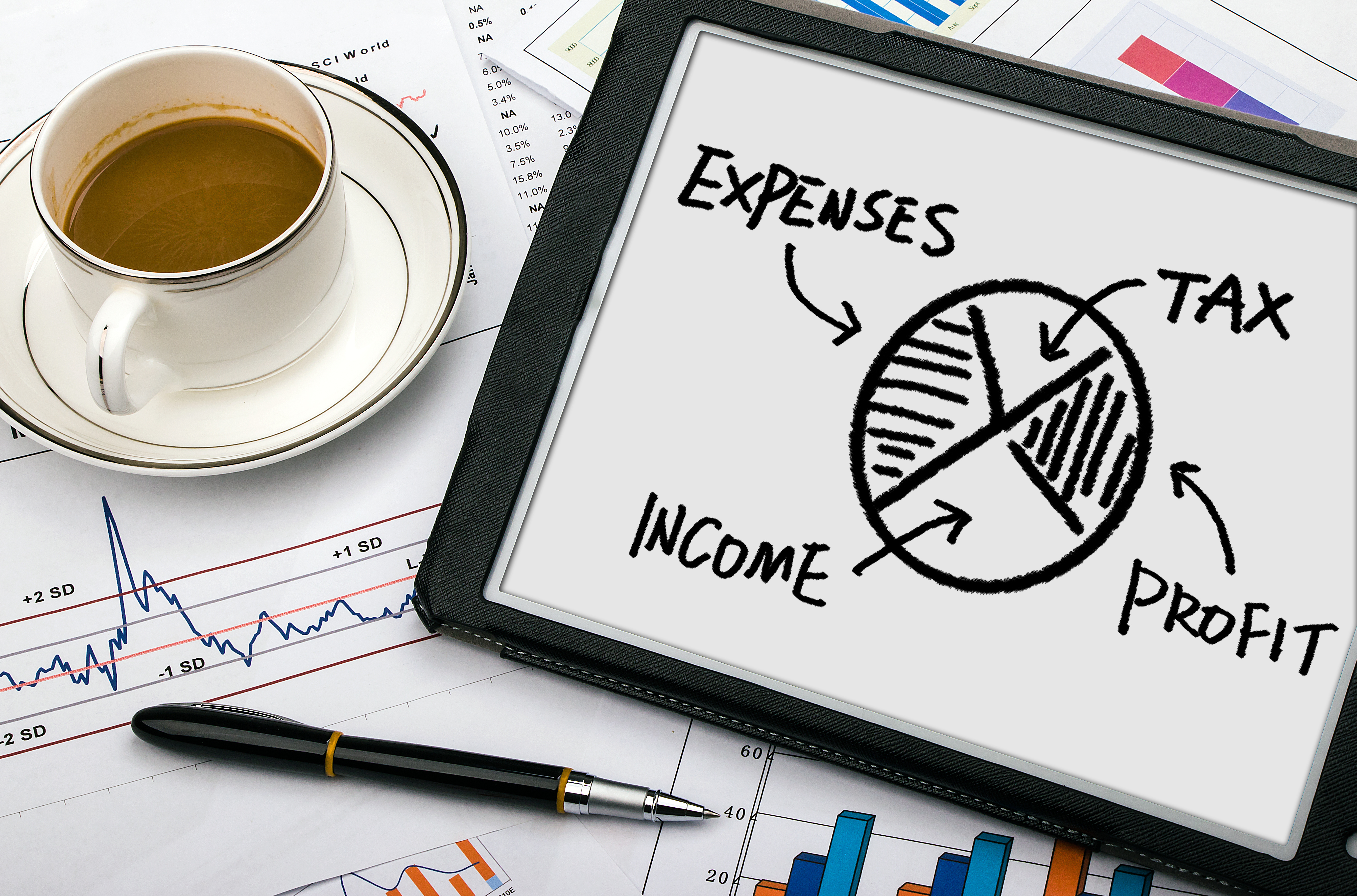Top Tax Planning Strategies Every Business Should Know
Key Takeaways
- Businesses can reduce their tax liabilities by effectively utilizing tax credits and deductions, which allow them to retain more revenue
- Selecting the appropriate business structure, such as an LLC or corporation, influences tax obligations and the extent of liability protection
- Contributing to retirement plans like 401(k)s or IRAs can decrease taxable income and benefit both the business and its employees financially
- By strategically managing the timing of income recognition and expense payments, businesses can maximize tax benefits, optimizing rates and deductions
- Utilizing depreciation rules and Section 179 deductions helps businesses write off the cost of qualifying equipment, offering significant tax savings

With the ever-changing tax laws and regulations, it can be difficult to keep up-to-date on everything to ensure you are complying and paying as little as you have to within your business.
You may also just not have the bandwidth to even focus on and figure out your business’s taxes. After all, you prefer to do what you do best — growing your business.
Luckily, there are resources and professionals out there that can make the complex clear for you — or even handle all of your business’s taxes for you.
Utilizing Tax Credits and Deductions For Your Business
As a business owner, you have an obligation to pay taxes, but that doesn't mean you can't take advantage of tax credits and deductions to reduce your tax bill. Tax credits and deductions are powerful tools that can help businesses save money on their tax liabilities. By understanding these tools, you can identify opportunities to reduce your tax bill and keep more money in your business.
Tax credits are a dollar-for-dollar reduction in the amount of taxes you owe. In other words, if you have a tax credit of $1,000, that means you can subtract $1,000 from the amount of taxes due. There are a variety of tax credits available for businesses, such as the research and development tax credit, the work opportunity tax credit, and the employee retention credit.
Deductions, on the other hand, reduce the amount of your taxable income. This means that deductions reduce the amount of your income that is subject to tax, which in turn reduces your tax liability. Common business deductions include expenses for rent, utilities, salaries, and benefits. By properly identifying and documenting these deductions, you can significantly reduce your taxable income and tax liability.
It's important to note that tax laws and regulations are complex, and it can be challenging for business owners to navigate them on their own. Seeking the help of a tax professional can be a wise investment, as they can provide guidance on tax credits and deductions, ensure compliance with tax laws and regulations, and help identify opportunities to reduce your tax bill. Utilizing tax credits and deductions can help you keep more money in your business, allowing you to reinvest in your operations, grow your business, and achieve financial success.

Choosing The Right Business Structure For Tax Reasons
Choosing the right business structure is a critical decision that can have significant tax implications for your business. The structure you choose can affect the amount of taxes you pay, the way you file your tax returns, and the deductions and credits you are eligible for. There are several business structures to choose from, including sole proprietorships, partnerships, limited liability companies (LLCs), and corporations. Each structure has its own tax advantages and disadvantages, as well as legal and financial implications.
For example, sole proprietorships and partnerships are relatively simple to set up and operate, but they offer limited liability protection and may be subject to higher taxes. LLCs offer greater liability protection and more flexibility than sole proprietorships or partnerships, but they can be more complex to set up and may require additional tax filings. Corporations offer the greatest liability protection, but they are subject to double taxation, which means that profits are taxed at both the corporate and individual level.
Reducing Taxable Income Through A Retirement Plan
Implementing a retirement plan can be an effective strategy for reducing taxable income. By contributing pre-tax dollars to a qualified retirement plan, such as a 401(k) or traditional IRA, you can lower your taxable income and potentially reduce your tax liability. Many retirement plans also offer employer contributions or matching contributions, which can further increase your retirement savings and reduce your tax bill.
It's important to understand the contribution limits, eligibility requirements, and tax implications of any retirement plan you choose to invest into. Working with a financial advisor or tax professional can help you identify the best retirement plan for your business and ensure that you are maximizing your tax benefits.
Timing Your Income & Expenses to Maximize Tax Benefits
Timing income and expenses is a common tax planning strategy used by businesses to maximize their tax benefits. The goal is to strategically time the recognition of income and the payment of expenses in order to reduce taxable income and increase deductions. For example, if you have a particularly profitable year, you may choose to defer income until the following year to lower your tax liability.
Similarly, you may choose to accelerate expenses into the current year to increase your deductions and lower your taxable income. It's important to understand the tax rules around income recognition and expense deductions, as well as any limitations or restrictions that may apply.
How To Utilize Section 179 Deductions
Section 179 of the IRS tax code allows businesses to deduct the full cost of qualifying equipment purchases in the year they are placed in service, rather than depreciating the cost over several years. This deduction can be a significant tax savings for businesses that need to purchase equipment to operate their business. The equipment must be used for business purposes and meet certain requirements to qualify for the deduction.
Understanding Depreciation Rules for Tax Savings
Depreciation is a valuable tax planning tool for businesses, as it allows them to reduce taxable income by deducting the cost of assets used in the business over their useful life. However, understanding and utilizing depreciation rules can be complex, and requires careful planning and analysis.
Different assets have different useful lives, which determine the depreciation schedule and amount of the deduction. For example, buildings have a useful life of 39 years, while computers may have a useful life of 5 years. It's important to properly identify and categorize assets, and understand their useful life, in order to calculate the correct depreciation deduction.
There are different methods of depreciation, including straight-line, declining balance, and MACRS, which have different benefits and drawbacks. The straight-line method is the simplest and most commonly used, while the declining balance and MACRS methods allow for faster depreciation in the earlier years of an asset's useful life.
Bonus depreciation is an additional deduction that can be taken for new assets placed in service during a specific tax year. This deduction allows businesses to immediately deduct a percentage of the cost of the asset in the year it is placed in service, rather than depreciating it over time.
The Section 179 deduction allows businesses to immediately deduct the cost of qualifying assets, rather than depreciating them over time. This deduction is subject to annual limits, and not all assets qualify.
Understanding and utilizing depreciation rules can be complex and requires careful planning and analysis. A tax professional can help businesses identify the best depreciation methods and strategies for their specific situation.
Tax-Free Fringe Benefits For Employees
Providing tax-free fringe benefits is a valuable way for businesses to offer additional compensation to their employees while reducing their own tax burden. Tax-free fringe benefits are those that are excluded from an employee's taxable income and are not subject to federal income tax withholding. Examples of tax-free fringe benefits include:
- Health and life insurance premiums paid by the employer
- Contributions to a retirement plan
- Educational assistance
- Dependent care assistance
- Transportation benefits, such as parking or transit passes
By offering tax-free fringe benefits, businesses can reduce their payroll taxes and improve employee satisfaction and retention. Offering benefits such as health insurance or retirement contributions can help attract and retain top talent.
Tax-Efficient Compensation For Employees
Implementing a tax-efficient compensation strategy for owners and employees is a crucial aspect of tax planning for businesses. A well-designed compensation strategy can help reduce tax liabilities for both the business and its employees. Here are some key things to consider:
- Balance between salary and benefits: Offering a mix of salary and benefits can help optimize tax savings for both the business and employees. For example, offering a higher percentage of benefits, such as health insurance or retirement contributions, can reduce taxable income for employees and lower payroll taxes for the business.
- Utilize tax-advantaged retirement plans: Contributions to retirement plans, such as 401(k)s or IRAs, can provide significant tax savings for both the business and employees. These contributions are tax-deductible for the business and reduce taxable income for employees.
- Implement stock options or equity-based compensation: Offering stock options or equity-based compensation can provide tax benefits for both the business and employees. These options can be structured to provide tax deferral or preferential tax treatment.
- Consider the impact of the new tax laws: Changes to the tax code, such as the Tax Cuts and Jobs Act, may impact the tax-efficient compensation strategies for businesses. It's important to work with a tax professional to understand the implications of these changes and adjust the compensation strategy accordingly.
Implementing a tax-efficient compensation strategy can be complex, but can provide significant tax savings for both the business and its employees.

Planning For Local & State Taxes
When it comes to tax planning for businesses, it's important to consider state and local taxes in addition to federal taxes. While federal taxes often receive more attention, state and local taxes can also have a significant impact on a business's bottom line. Here are some key points to remember when preparing for local and state taxes:
- Nexus: Businesses need to understand the concept of nexus, which refers to the connection between a business and a particular state. If a business has nexus in a state, it may be required to pay state and local taxes in addition to federal taxes.
- State and local tax rates: State and local tax rates can vary widely, so businesses need to understand the tax rates in each state where they do business.
- State and local tax credits and incentives: Many states offer tax credits and incentives to encourage businesses to invest in their state. These can include tax credits for hiring employees, purchasing equipment, or investing in certain industries.
- Compliance: Businesses need to ensure that they are in compliance with all state and local tax laws and regulations. Failure to comply can result in penalties and interest charges.
- Planning: It's important for businesses to plan ahead for state and local taxes, just as they do for federal taxes. This can include strategies such as taking advantage of tax credits and incentives, structuring business activities to minimize tax liabilities, and working with a tax professional to identify the best tax planning strategies.
Utilizing Tax-Deferred Investment Options For Business Profits
Utilizing tax-deferred investment options is a smart tax planning strategy for businesses to maximize profits and minimize tax liabilities. By deferring taxes on investment income, businesses can keep more of their earnings and reinvest those profits back into the business. There are several types of tax-deferred investment options available to businesses, including 401(k)s, IRAs, and annuities. These options allow businesses to defer taxes on investment income until the funds are withdrawn, typically in retirement.
In addition to tax savings, tax-deferred investments can provide other benefits for businesses, such as employee retention and recruitment. Offering a retirement plan, such as a 401(k), can be a valuable benefit for employees.
However, there are limitations and regulations surrounding tax-deferred investment options. For example, there are contribution limits for retirement plans, and businesses need to ensure they are in compliance with all applicable regulations and requirements. Proper planning and management are essential for businesses to maximize the benefits of tax-deferred investments. This includes selecting the right investment options, managing investment risks, and monitoring performance regularly.
By understanding the benefits and limitations of tax-deferred investment options and working with a tax professional, businesses can identify the best investment strategies for their specific situation and achieve their long-term financial goals. By deferring taxes on investment income, businesses can reinvest those earnings back into the business and improve their overall financial position.
Bottom Line
By understanding and utilizing these strategies, businesses can reduce their tax liabilities, increase their deductions, and keep more money in their businesses. Seeking the help of a tax professional can ensure compliance with tax laws and regulations, and identify opportunities to reduce tax bills.
Planning for taxes doesn’t have to be that hard. And if you need more information – we are here!
What are the benefits of utilizing tax credits and deductions?
Tax credits offer a dollar-for-dollar reduction in your tax liability, while deductions decrease your taxable income. Both can significantly lower the amount of taxes a business owes, making them essential strategies for reducing overall tax expenses.
How does choosing the right business structure affect my taxes?
The business structure you choose (e.g., sole proprietorship, partnership, LLC, corporation) impacts how you are taxed and the type of tax liabilities you face. Each structure has different tax advantages and legal implications, so it's important to select the one that best suits your business’s financial goals and operations.
Can retirement plans reduce my business’s taxable income?
Yes, contributions to retirement plans like 401(k)s or traditional IRAs are typically pre-tax, which can reduce your business’s taxable income. These plans not only provide tax benefits but also help in securing financial stability for employees, enhancing job satisfaction and retention.
Edited by:
Bryan Huynh
•
Product Tester & Writer

























































































